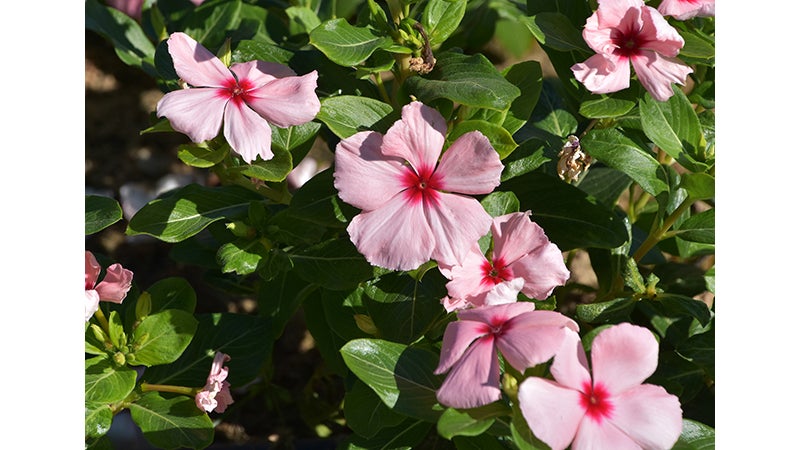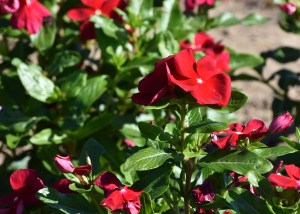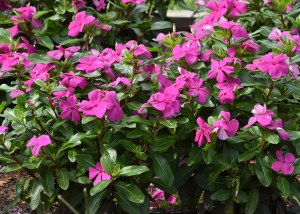Well-tended vinca excel in summer landscapes
Published 9:00 am Sunday, July 18, 2021

- APRICOT -- Cora vinca, such as this apricot selection, have attractive foliage that shows off their heavy production of colorful flowers. (Photo by MSU Extension/Gary Bachman) Alt text -- Purple flowers bloom on a green plant. ###
|
Getting your Trinity Audio player ready...
|
By Gary R. Bachman
MSU Extension Service
One of the best flowering annuals we can have in the second half of the summer season is the flowering vinca.
I made a brief comment a couple of weeks ago about replacing petunias with flowering vincas. The biggest problem many gardeners have with flowering vinca is planting it too early in the spring in cool soil or keeping the planting beds too wet. Both of these missteps lead to root rot issues.
But flowering vincas are great plants, so to address these potential problems, I like to recommend the Cora vinca series. Cora selections, along with Nirvana vinca, have a high degree of tolerance to the disease problems that can impact other vinca selections.
Cora vinca has attractive, dark-green foliage with a leathery look and texture that make the perfect background to really show off its heavy production of colorful flowers. Vincas are available in upright or spreading growth habits.
Upright Cora grows to about 16 inches tall and wide and has colors of white, lavender, violet, strawberry and red.
Cora Cascade vinca, which has a spreading growth habit, produces plants with good branching that create a nice, colorful mass 8 inches tall and up to 36 inches wide. The trailing growth habit is perfect for creating a floral carpet effect and displaying the big, showy flowers that come in colors of cherry, lilac, peach blush, polka dot and strawberry.

RED – Cora vinca are available as upright or spreading selections. Upright stand as high as 16 inches, while spreading selections create a floral carpet effect. (Photo by MSU Extension/Gary Bachman)
Alt text — Red flowers bloom on a green plant.
###
Follow these tips to have the best success when planting vinca in your garden and landscape.
Vinca will always flower and grow best when planted in full sun in raised landscape beds. The raised bed helps to achieve optimum planting soil drainage. This is important because flowering vinca does not like to have “wet feet,” and it develops root rot problems in these conditions.
Always wait to plant after May 1 when the landscape soil has warmed up. That’s not a problem if you want to plant vinca into your landscape now.
Vinca plants are heavy feeders, so be sure to incorporate a quality, slow-release fertilizer at planting. Feed monthly with a water-soluble 20-20-20 or 20-10-20 to keep those flowers blooming.
Mulch with pine straw instead of a heavier mulch like pine or cypress bark to allow better air movement through the mulch.
While vincas are drought tolerant, they benefit from supplemental irrigation during extended dry periods. But don’t use overhead watering, which can splash disease organisms onto the plants. I recommend using drip irrigation, which applies water directly to the soil.

VIOLET — Flowering vinca such as this Cora Violet selection are versatile and can be used in place of petunias. (Photo by MSU Extension/Gary Bachman)
Alt text — Purple flowers bloom on a green plant.
###
I’ve seen some good-looking vinca plants at local garden centers lately. It’s not too late to take advantage of these great plants this year.
[EDITOR’S NOTE: Dr. Gary Bachman is an Extension and research professor of horticulture at the Mississippi State University Coastal Research and Extension Center in Biloxi. He is also the host of the popular Southern Gardening television and radio programs. Contact him at southerngardening@msstate.edu. Locate Southern Gardening products online at http://extension.msstate.edu/





